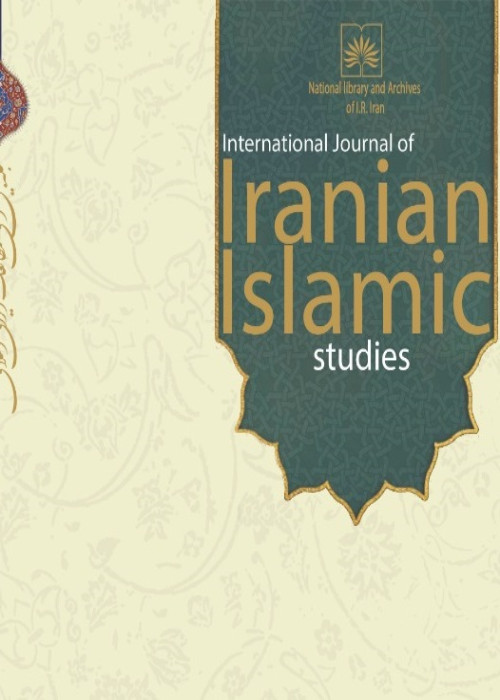"Study of the evolution of scientific ruling in manuscripts from the beginning of the Islamic period to the ninth century AH"
Author(s):
Article Type:
Research/Original Article (بدون رتبه معتبر)
Abstract:
Due to the importance of the Qur'an (the Holy Book) for Muslims, manuscripts were also highly valued in Islamic civilization. As we see that the most exquisite manuscripts, including Qurans, literary and scientific books have been produced in Islamic civilization. As a result, one of the most important and prominent arts formed in Islamic civilization is book art, and consequently the study of manuscripts is of great importance for art scholars. Among the manuscripts preserved in Islamic civilization, the scientific manuscripts have an important rank because science has been very important for Muslims. The scientific manuscripts in Islamic civilization have different decoration which some of these decorations are survived in the earliest ones. Among them the tables appear in first scientific manuscripts and primarily they are functional than decorative. scientific tables, specifically are not studied yet.In this article, using an analytical approach will study the tables in the earliest Islamic manuscripts and make a question on the formal changes of tables and how the scientific tables influenced on Islamic book art? To answer these questions, several manuscripts, including: All earlier manuscripts (before the ninth century) were preserved in the libraries of the Islamic Consultative Assembly, the Malik Museum and Library, and some important manuscripts preserved in libraries such as the University of Tehran Library, the French National Digital Library, the British National Library and the Leiden University Library, were examined. As a result, it was determined, Prior to the ninth century AH, several features can be seen in most scientific tables: Drawing the lines of the tables in red, as a single line and sometimes in pairs (tow lines), and in some cases in quadric (two pairs) , and another features were obliquely writing and the Kasheeda writing (extended writing, stretched writing, lengthened writing) and use of several different colors in the cells of the tables. Some of the features listed can also be found in Latin manuscripts that are chronologically earlier than the Islamic manuscripts.It is noteworthy that we see the use of all these techniques or features at a later time in the layout of other manuscripts (with non-scientific topics).These include: Drawing Rulings around the texts in red, in pairs (tow lines) from the sixth century AH and drawing Rulings in four lines (two pairs), also in red from the eighth century AH in some manuscripts.A collection (No. 328, Nafez Pasha Library, last date of Rabi al-Awal 509 AH and the third decade of Sha'ban 510 AH) and the book Khatm al-Gharaib, written by Khaghani (No. 3118, Austrian National Library, dated 593 AH) are among the manuscripts produced in the sixth century Hijri, whose Rulings (lines drawn around the texts) are single and double lines, and manuscripts (No. 14017, Majlis, dated 695 AH), Diwan Seif Forghani (No. IKU.FY. 171, Istanbul University Library, Dated 749 AH) and the Book of Medical (No. 4856, University of Tehran, Dated 788-789 AH) are examples produced in the seventh and eighth centuries AH and their Rulings are double (two lines). And some of the manuscripts whose Rulings are four lines (two pairs) are: manuscript (No. 10474, Majlis, dated 13 Muharram 716 AH), the book Hadaiq Al-Anwar Fi Haqaiq Al-Asrar (No. 862, Malik, dated 8th century AH) And the book Al-Masader (No. 387 Malik, dated 8th century AH) and Diwan Saadi (No. 2569 of the Majlis, dated 721 AH).Another art that has entered the art of book design from scientific tables is the obliquely writing. From the seventh century AH, the art of obliquely writing can also be seen in non-scientific manuscripts.The art of obliquely writing was first used in the books of some poets in the seventh century AH.Similar to what was previously used in scientific tables, and from the eighth century AH and the following centuries, the art of obliquely writing, especially in the books of poets, has become one of the most widely used techniques in the art of book decoration. Divan Khaghani (No. 976, Library of the Majlis, dated 6th and 7th centuries AH) is one of the oldest literary manuscripts in which the art of diagonal writing has been used. Diagonal writing reached its peak of beauty in the middle of the eighth century AH in Khajoo Divan (No. 5980, Malek Library, dated 750 AH).Scientific tables have also had other effects on the art of book design in Islamic civilization, including the design of index pages in some manuscripts. Because the index pages in these manuscripts are divided like scientific tables, and these index pages are correctly reminiscent of scientific tables. One of the most beautiful index pages, which is designed like scientific tables, belongs to the book of Mons al-Ahrar (Inv. No. LNS 9 ms, Kuwait, Dar al-Athar, dated 741 AH).
Keywords:
Language:
Persian
Published:
Journal of Iranian Islamic Studies, Volume:11 Issue: 4, 2021
Pages:
28 to 63
magiran.com/p2500072
دانلود و مطالعه متن این مقاله با یکی از روشهای زیر امکان پذیر است:
اشتراک شخصی
با عضویت و پرداخت آنلاین حق اشتراک یکساله به مبلغ 1,390,000ريال میتوانید 70 عنوان مطلب دانلود کنید!
اشتراک سازمانی
به کتابخانه دانشگاه یا محل کار خود پیشنهاد کنید تا اشتراک سازمانی این پایگاه را برای دسترسی نامحدود همه کاربران به متن مطالب تهیه نمایند!
توجه!
- حق عضویت دریافتی صرف حمایت از نشریات عضو و نگهداری، تکمیل و توسعه مگیران میشود.
- پرداخت حق اشتراک و دانلود مقالات اجازه بازنشر آن در سایر رسانههای چاپی و دیجیتال را به کاربر نمیدهد.
In order to view content subscription is required
Personal subscription
Subscribe magiran.com for 70 € euros via PayPal and download 70 articles during a year.
Organization subscription
Please contact us to subscribe your university or library for unlimited access!



